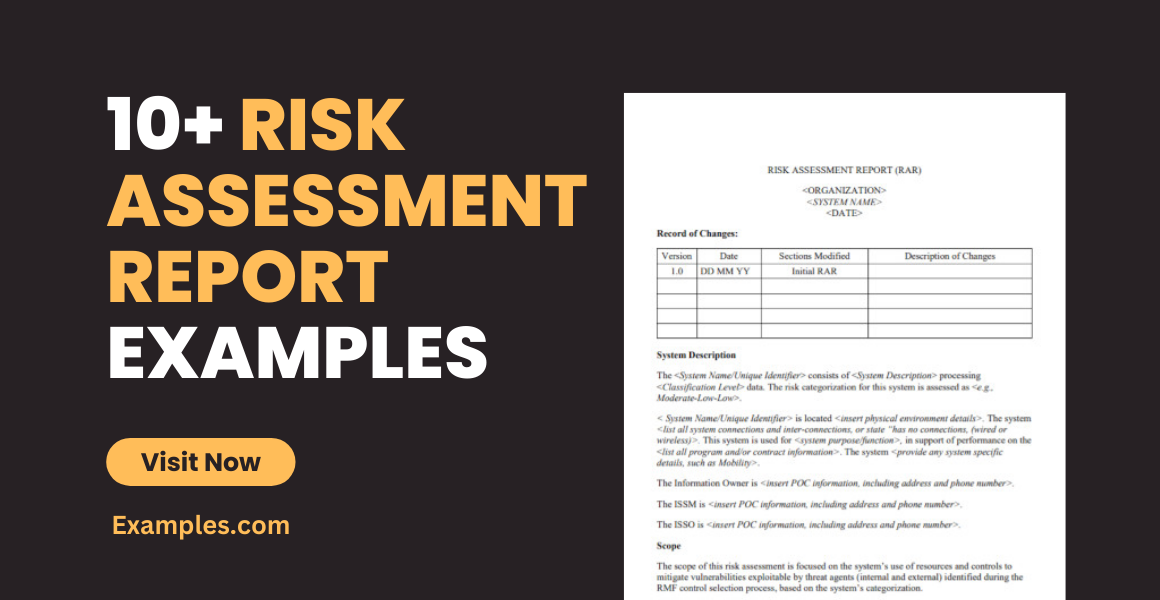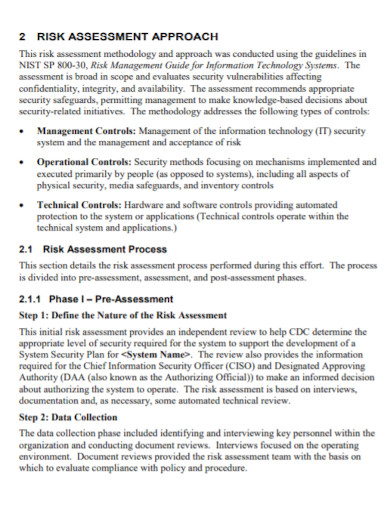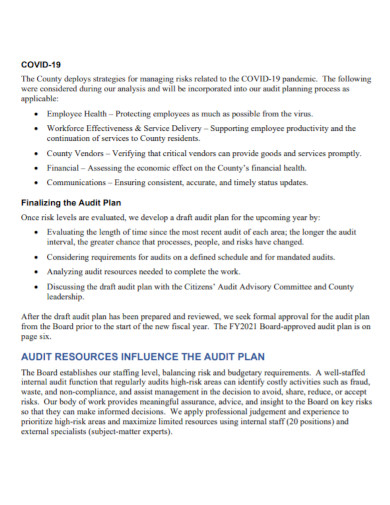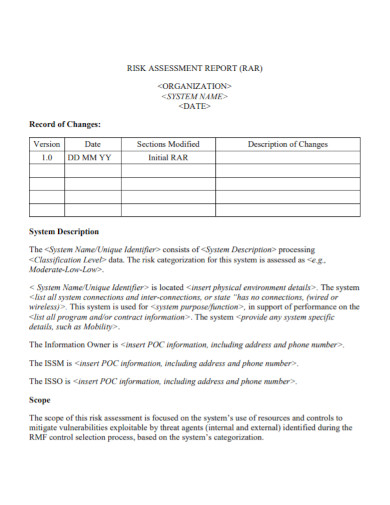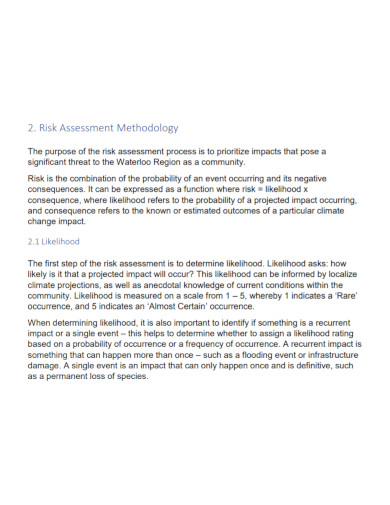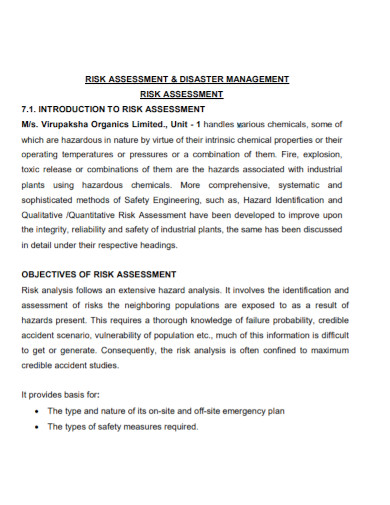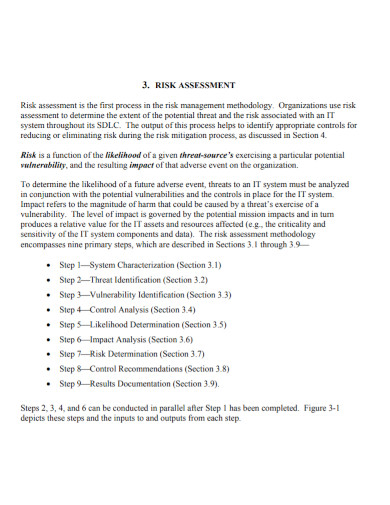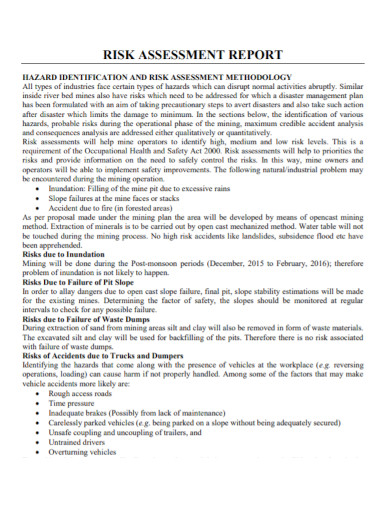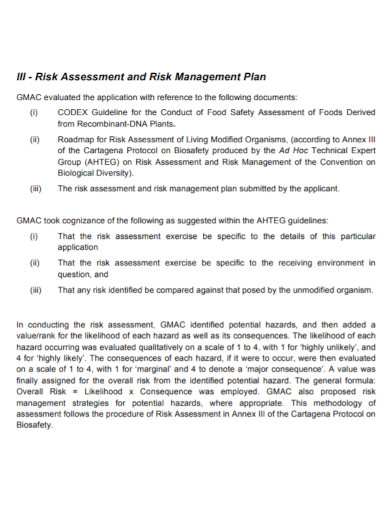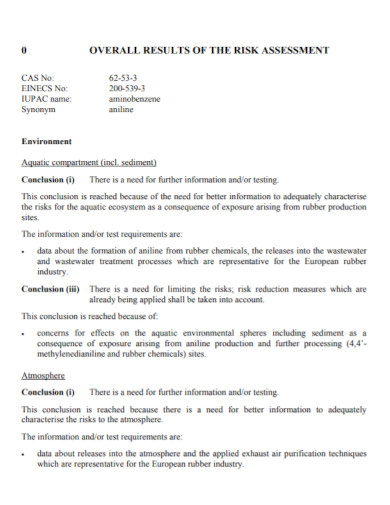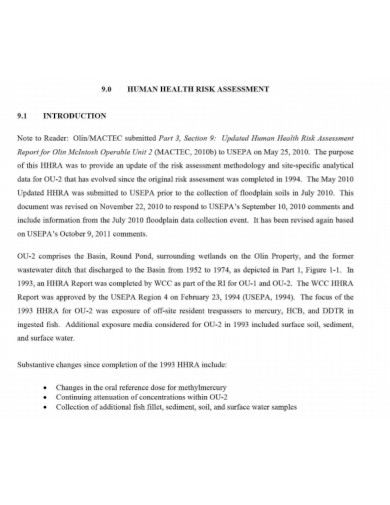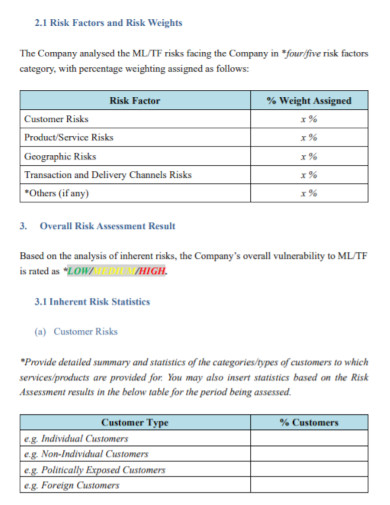10+ Risk Assessment Report Examples to Download
When it comes to assessments, we often picture a series of questions that are given by teachers, guidance counselors, or even psychologists, in a way that they use the answers we give would affect the results of the assessment. However, an assessment can also be used for companies and for businesses. What we mean is that when you want to assess the possible risks that could happen to a business, company, community, or organization. As we know, we cannot predict where risks may come or go or when these kinds of risks may appear just about anywhere and at any time. This is why making a risk assessment and making a report should be a priority when it comes to knowing and understanding what these risks are and how to eliminate them.
Picture this kind of scenario. Your organization is going through a lot of issues regardless of the times you plan on making things work. However, the issues you are facing are the risks that could affect the projects or even the people working on these projects. To get to the bottom of this, you assess the risks that you noticed. Once you have done so, making the report and handing it over is the next step to getting these risks out of the way. With that, here are some 10+ examples of risk assessment reports.
10+ Risk Assessment Report Examples
1. Draft Risk Assessment Report
2. Risk Assessment Audit Report
3. Organization Risk Assessment Report
4. Climate Risk Assessment Report
5. Disaster Risk Assessment Report
6. Computer Risk Assessment Report
7. Risk Assessment Report Template
8. New Risk Assessment Report
9. Union Risk Assessment Report
10. Human Health Risk Assessment Report
11. Business Risk Assessment Report
What Is a Risk Assessment Report?
A risk assessment report is a document that summarizes the entire assessment and the evaluation of the risk. This report gives information about the possible risks and those who may be affected by it. In addition to that, a risk assessment report gives a general overview of the assessment done, the evaluation done, the possible solutions for the type of risk, and the overall solution. Of course, those who are responsible for writing the report would also know more about the risks that the organization or the company may be facing.
Moving to the purpose or the importance of a risk assessment report, we all know that when we write reports, the key elements or the key information should be present at all times. The same goes for this kind of report. The main reason for writing this report is to make sure that you get to address all the risks that may destroy or threaten your business, company, or organization. The fact that these risks are going to be resolved by simply writing the risk assessment report and handing it over to the head of your organization or company.
How to Write a Risk Assessment Report?
Making a report is as important as what you are going to be writing in the report. With that, here are your tips when it comes to writing a risk assessment report.
1. Add a Convincing Title to Your Report
Just as you would write an essay, a story, or even a report, always add a convincing title. This is to catch the person’s attention as well as to be able to give a good view of what you may be reporting. Convincing titles are enough, so avoid fancy titles as they do not give your report any credibility or seriousness.
2. Give a Short but Detailed Introduction
Write a short but detailed introduction about your report. Do not however immediately begin by stating the problem or the solution of your risk assessment. This would be done in the middle or body of your report. Your introduction serves as a way to give out what you are going to be showing about your risk assessment report.
3. Stick to the Facts from the Assessment
From the body of your report, you begin by stating the risk assessment, the process of the assessment, and the results. Stick to the facts that you got from this. Do not fabricate any of the facts or evidence that you may have taken out from the assessment and evaluation. The whole point is to know how severe or mild the issue is and not to make your report look pretty.
4. Make the Solutions for Each Risk
The conclusion of your report should be the solutions for each of the risks. These solutions should be doable and possible. An impossible solution for a risk does not help solve it. It only makes it worse and bigger than the original problem. Think about simple solutions for risks that can be found on a daily basis and start from there. The bigger the risk, the more complicated your solution will be, and you may need to seek professional help for that.
5. Review Your Report
As mentioned in the first tip, just as you are going to be writing an essay or a story, or even a report, the best thing you can do is to always review. There is nothing wrong with reviewing and proofreading your report. It only means that you know that this document is classified as a professional document and should also be treated as such. This means that you need to be careful with how you may want to word your report and how you can get your ideas and points across.
FAQs
What is a risk assessment report?
A professional document that states the summary of the results of the risk assessment being done in order to figure out the types of risks that may be present.
Is there someone who is assigned to write the report?
There is a person who is assigned by the company or the organization to handle this type of report.
When should you begin writing your risk assessment report?
Once the risk assessment is finished, it is best to begin writing the report. As you are going to be explaining the steps being made to reach the point of the result of the assessment. The fresher the memory, the better results and the better details you can write.
It goes without saying writing reports is crucial. The information that you take from either observing or making notes to make the report a success is also important. When it comes to writing risk assessment reports, you have to make sure that all your details and information are placed in the report as this is where they are going to be taking into consideration the risks that need to be addressed. The best way to do so is to list all the risks, their severity, and the solutions.


